Right now both of our Mitsubishi Pajeros are out of commission. I know it’ll only be temporary, but we will definitely have some interesting times coming up here shortly. Let me elaborate.
It was a dark and stormy night …
Not really.
It was actually a beautiful early summer morning. We were going to take both of our JDM turbo diesel Mitsubishi Pajeros up to the NW Overland Rally and BC Overland Rally. We’d be camping for two weeks, going up through parts of British Columbia exploring and having a great time both working and playing. We’d gotten both Pajeros all ready to go, along with our little Dinoot trailer I’d pull behind the Ralli Tractor, our 1992 Pajero. We packed up and headed out that morning, and things were going well. I was on my new fifteen52 Turbomac HD Classic wheels shod with BFGoodrich KM3 tires; it was their maiden voyage. As we cruised down I-84 east, I remarked over the radio how quiet they were. The truck was running smoothly, quietly, and powerfully. The sunny and warm morning had both Mercedes and me excited for our trip.
I always keep a keen eye on how our older rigs run, especially on long-distance jaunts, and this day was no different. However, as we approached the town of Hood River, Oregon I noticed the temperature gauge was a bit above its usual mid-gauge reading. It wasn’t much higher than normal, but it was higher. I thought to myself, well you are towing, you paranoid freak. But I’ll keep an eye on it. As we continued on up a small grade, however, the temperature started to creep up even farther. I hopped on the radio and told Mercedes that we should take the next exit and just check it out. Afterall, it was probably just because I was towing.
We pulled into the 76 station in Hood River and I hopped out of the rig. Immediately I could smell coolant—never a good sign. I popped the hood to see what was going on. Other than the odor of hot antifreeze, nothing looked amiss. I crawled under the rig and saw just a couple drops of coolant on the front torsion bars. However, for the life of me I could not find where it was dripping from. Radiator hoses were dry, no obvious streams of green liquid were cascading from anywhere. This was really weird. I ran into the gas station to buy some coolant and added only several ounces at maximum, as the engine didn’t seem down much coolant, at least not in the reservoir. The engine temp had risen again. Not to the “hot” level, but it was up there. We shut the vehicle off.
Well, now what? Do we continue on with a jug of antifreeze at the ready, or do we turn around, drop the trailer, throw everything in to our Mitsubishi Delica (aka the Space Tractor), and not risk it? We were only an hour outside of Portland, so we figured we’d be better safe than stranded, so we opted to limp the Ralli Tractor home.
Almost immediately upon entering the Interstate, the temperature started to climb quickly, this time higher than it’d ever been. I slowed down to about 45 mph and turned the heater on full blast. To my surprise, I had no heat. Then, I’d watch as the temperature gauge went back to the middle. Five minutes later, it’d shoot up. I’d get a bit of hot air out of the vents, and the temp would go down. But just as soon as that air would get hot, it’d get cool and the gauge would go back up. This sounded like a bad thermostat to me. With our hazards on, we played this up and down game 66 miles back to Portland. And at 40–45 mph all the way back, the drive felt like an eternity.
Once we got to Portland the gauge spiked. Shit. I’m slowing down hoping the gauge will drop, but it isn’t. I knew the Pajero’s 4D56 diesel is very susceptible to damage from overheating, so I decided I’d better pull over. But that gaugue was still pegged. I let the engine run just a bit and finally, I shut it of. We’re now entering the beginning of rush hour, and we pulled onto the shoulder of the Terwilliger Curves, a twisty section of Interstate 5 just south of downtown. Traffic is thick. Cars, trucks, busses, and semis race past us at 50+ mph. I hop out of my rig and go back to Mercedes, who’s been in the Terra Tractor (our ’91 Pajero) the whole time. We’re about 2.5 miles from our house, but I do not want to drive this thing anymore. We need to tow it home.
Traffic is constant. But Mercedes finds a break in the action enough to pull around me and park. We take a tow strap out, and hook her Pajero to mine. We’ll simply flat tow it home. We swap rigs. She’ll steer and work the brakes of the overheating Ralli Tractor, and I’ll tow it with the healthy Terra Tractor.
We flip the hazard lights on again and make our way slowly down the shoulder of I-5 and come upon our exit. We make it down the main drag and turn onto our street. We unload our trailer, throw everything as fast as we can into the Delica van, and head out. We’re gone for two weeks.
After we return from our two-week adventure, I replace the Ralli Tractor’s thermostat and flush the cooling system. The water was brown with rust, and the thermostat was equally rust-laden. After replacement, we took the rig for a few trips around town, and the engine never gets above the middle hash mark again. Success! Or was it?
[NARRATOR]It was not success …[/NARRATOR]
Fast forward a few weeks. We made plans to have rock sliders custom fabricated for the Pajero at Wanderlust Overland in Oregon City. We drop off the Ralli Tractor, leaving it in good hands. This was a modification we’d wanted to do for a while, as rock sliders are a crucial bit of armor if you’re going to be venturing onto off-road trails and want to keep your rocker panels in tact.
A few days later, the owner, Michael, texts us to say the Pajero is leaking coolant. We ask how much, and he send us a photo. This is not a few drips; this is several ounces. We asked if he knew where it was coming from. Michael, being the good dude he is, crawls underneath and said that it looked like it might be coming from a hairline crack in the block.
Fuck.
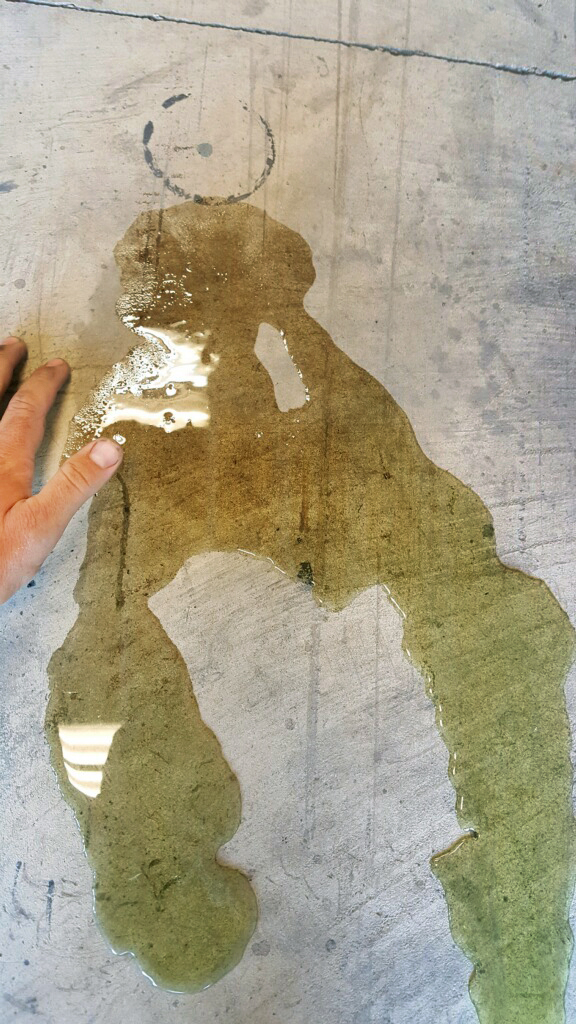
He kindly asks if we’d still like to proceed with the sliders, and after some debate, we said yes, as we’re planning to keep the Ralli Tractor for some time. When the sliders were complete, Michael says we can come by and pick it up, and he’s topped the coolant off for us. Upon our arrival, the sliders look awesome; he’s done a fantastic job on them. We depart with the leaky Ralli Tractor and make 18.2 mile trek home with zero problems.
That weekend, a friend (and fellow Pajero enthusiast), Kevin, comes by with his cooling system pressure test kit. You pop the radiator cap, attach a hand pump to it, and pressurize the system. Once pressurized, you’ll be able to inspect the system for leaks.
In a gross display of leakage, Kevin and I witness the accused hairline crack spray coolant in a grandiose fashion. Yep, the damn block is cracked.
Just shoot me.
So here we are, a fantastic Pajero with a broken heart. We fully anticipate replacing the engine and getting the Ralli Tractor back on the road again.
And with that being said …
Our ’91 Pajero is also temporarily out of commission. No, its block isn’t cracked, its transmission hasn’t fallen out, and it hasn’t spontaneously combusted. I’m in the process of rebuilding the front suspension. We’d already replaced the shock absorbers, but now it’s time for upper and lower ball joints, new sway bar bushings all around, and new tie-rod ends. We noticed a bit of a clicking noise when we’d turn hard, and figured we’d start with ball joints and bushings.
However, as I was about to button up the upper ball joints, I noticed the inner CV boot had ripped badly. Well shit, since I’m down here, I might as well replace both half shafts with new units. Of course, being a JDM rig, I can’t just pop into NAPA and ask for two new CVs for a ’91 Mitsubishi Pajero equipped with the 4D56 turbo diesel. As I type, I’m in the midsts of finding which axles I need source. Once I get the correct axles, we’ll be able to button it up and have it back to normal.
So long story long, we have two Pajeros that are currently inoperable. Thankfully, they’re not on jackstands in the lawn or anything. Well, one’s on jackstands, but it’s not in the lawn. At least not at this point.
We’ll get all of this fixed, I’m sure. I’m also sure we’ll learn a lot along the way. Yes, I’ve replaced axles before. However, I’ve never done axle seals. I have not ever replaced an engine on my own, though. Thankfully, my friend, Kevin, has and he said he’ll help out. So now we need to decide what we’re exactly going to do with the Ralli Tractor’s engine. Most likely, we’ll swap in another 4D56. I even know of a brand-new short block, which might be a great idea.
Regardless, when you own an old JDM vehicle, you can expect to have issues with it. Shoot, if you have an old vehicle of any sort you can expect to have issues. A cracked block is quite an anomaly, however. But we’ll figure it out and get both Pajeros back on the road—sooner than later.
Photos by Mercedes Lilienthal unless otherwise noted.

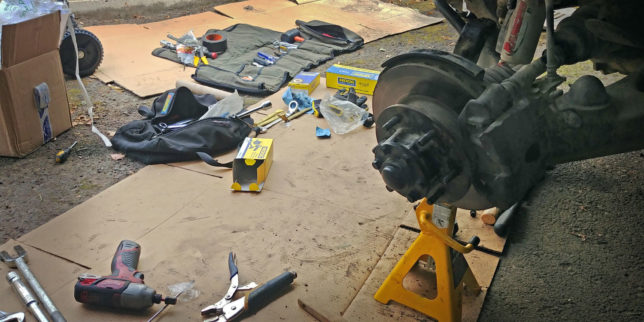
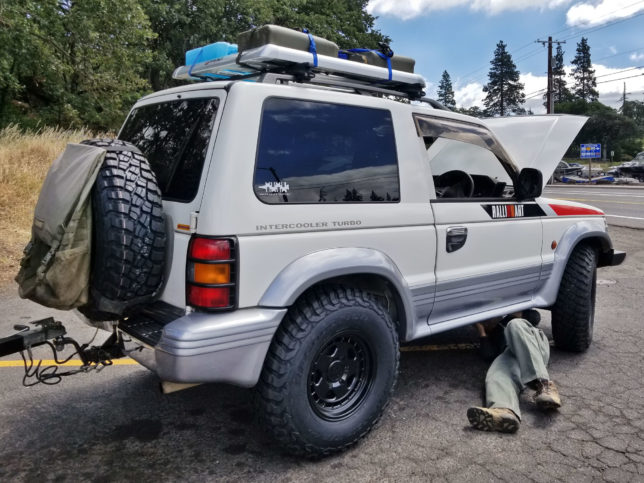
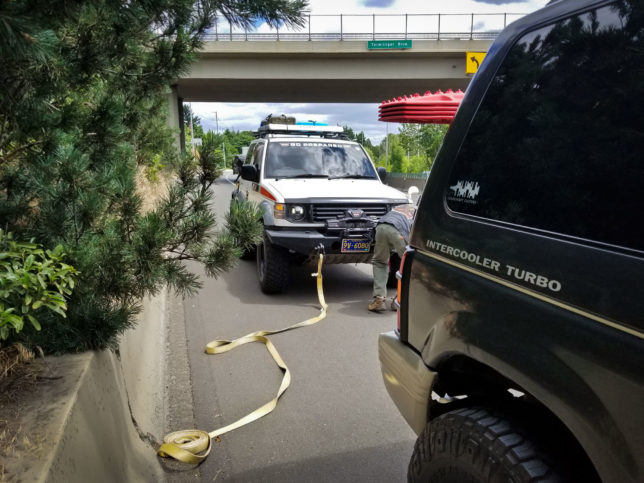
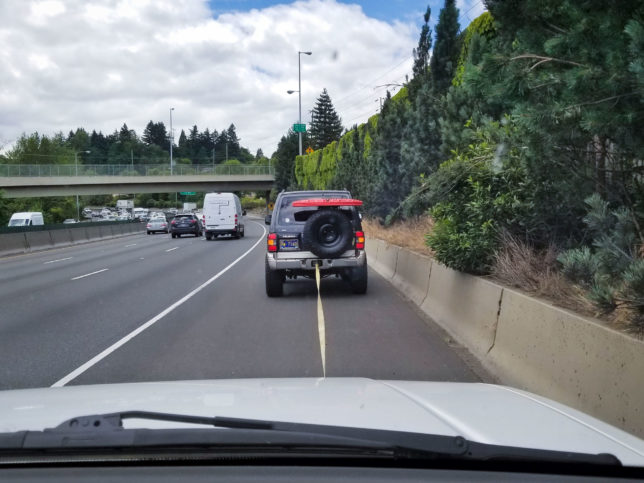
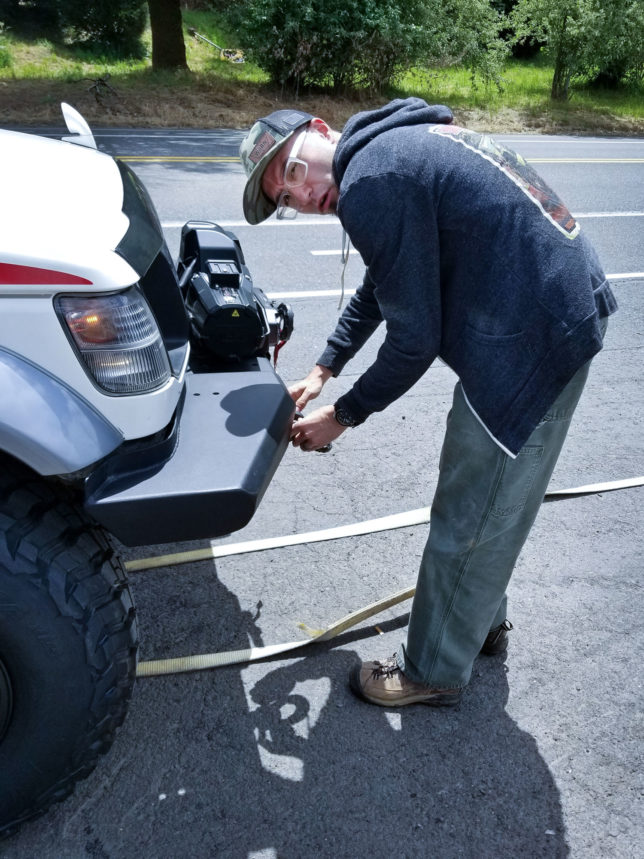
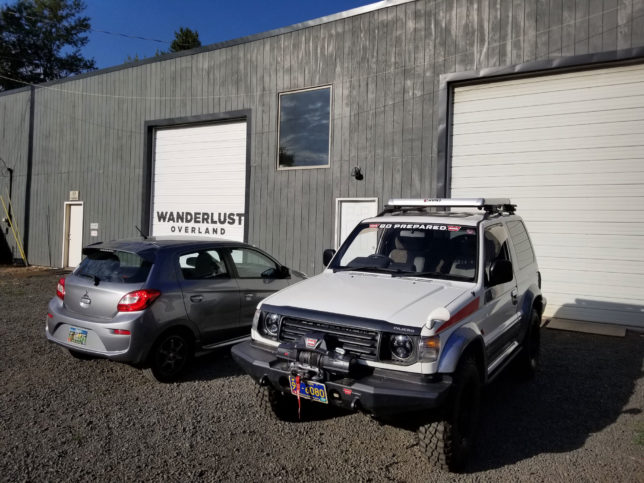
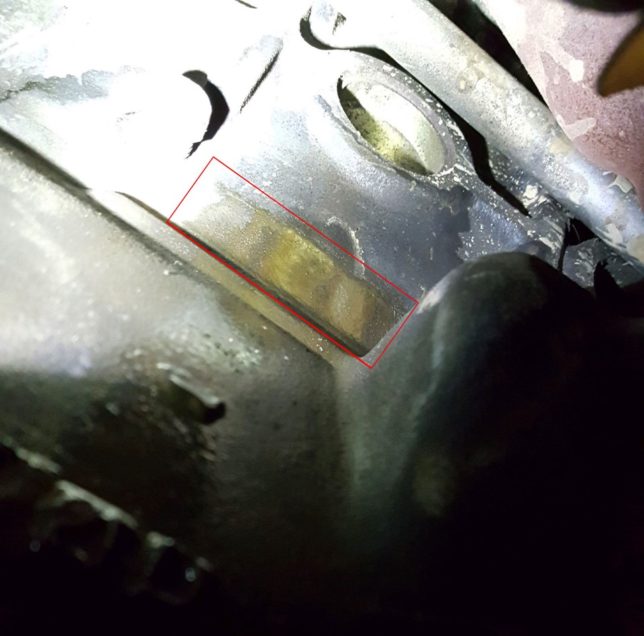
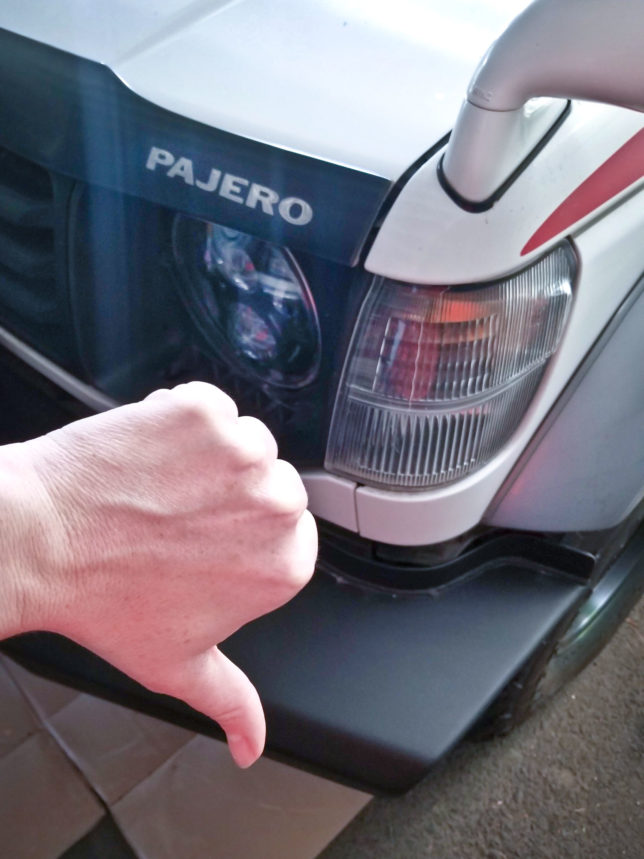
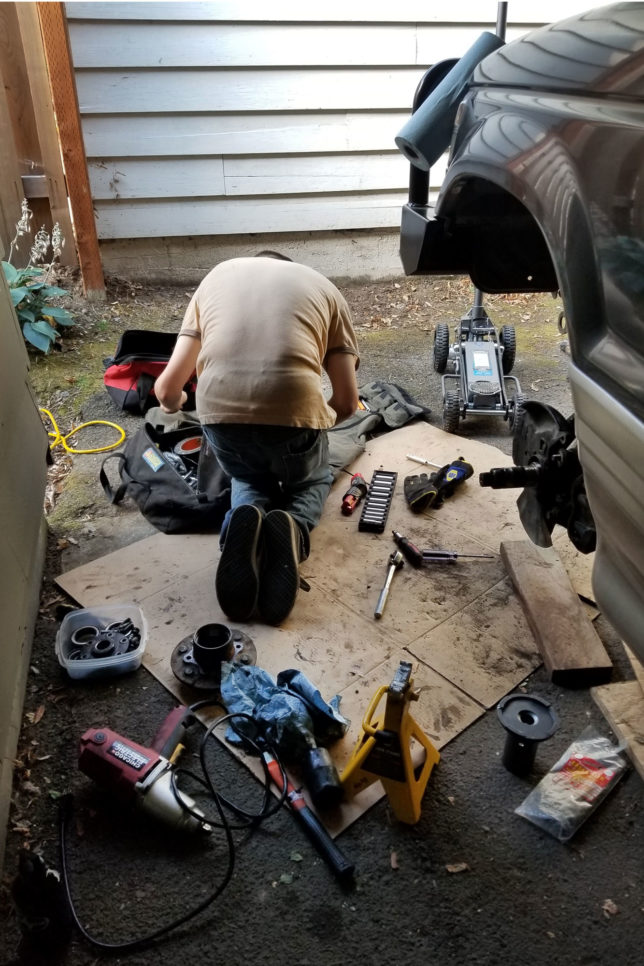
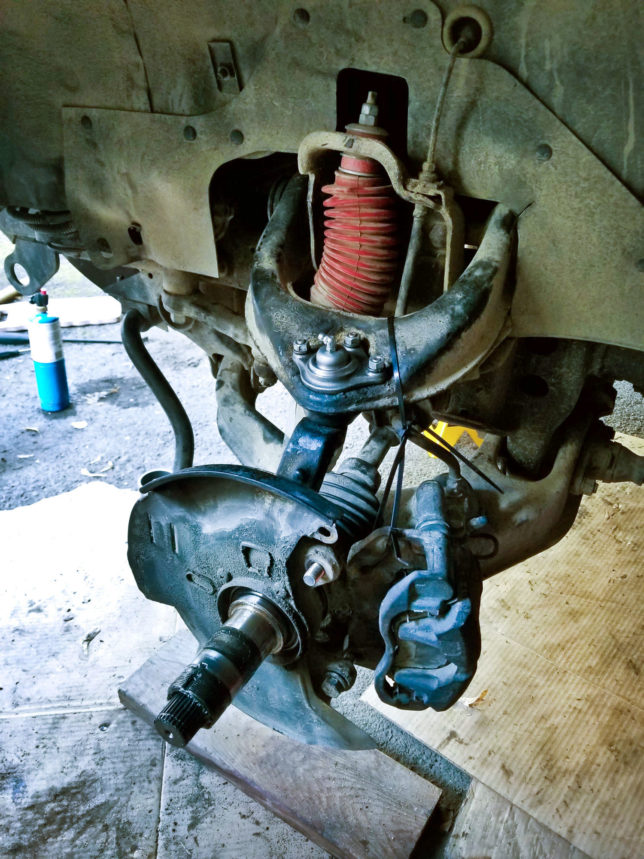
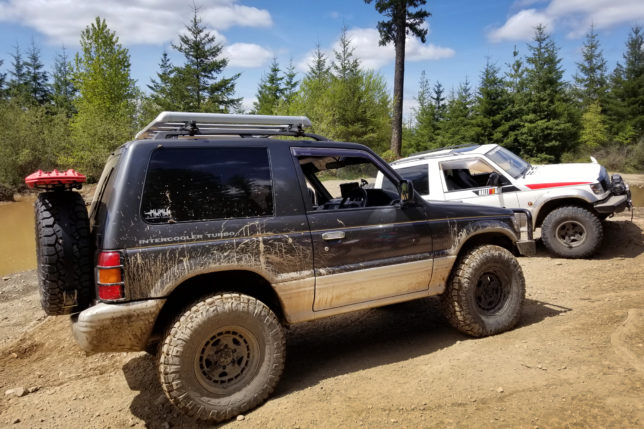
You have a big job to do.Good luck.
Hermine
Amazing work guys. Loved your blog…